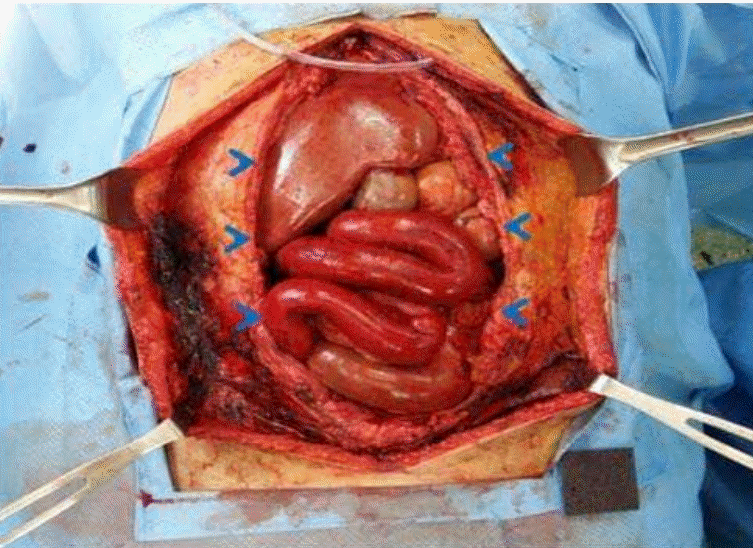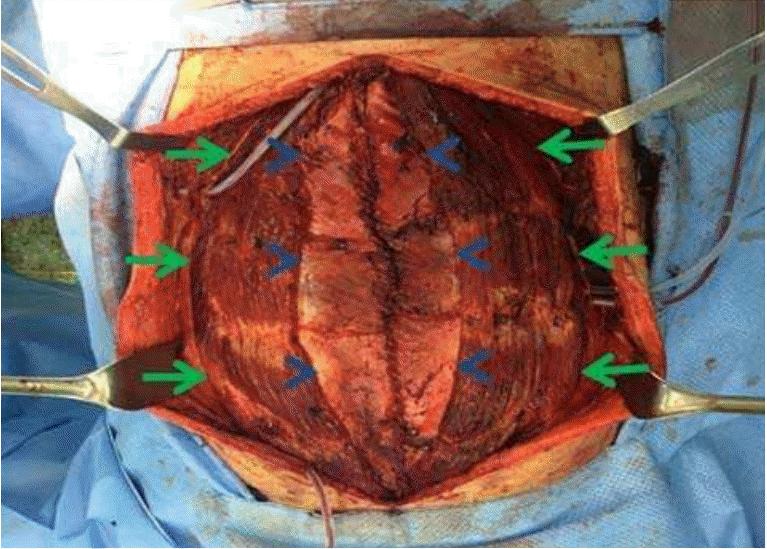Anterior Rectus Sheath Turnover Method for Abdominal Wall Reconstruction in a Trauma Patient
Article information
Abstract
Trauma patients with massive hemorrhage require extensive fluid resuscitation, resulting in massive edema of the bowel, the retroperitoneum, and the abdominal wall. We present a case in which the anterior rectus sheath turnover method was used for abdominal wall reconstruction in a patient with a difficult abdomen.
CASE
A 49-year-old female patient was presented with a large amount of hemoperitoneum, pelvic fracture, and retroperitoneal hemorrhage caused by a pedestrian traffic accident. At the time of admission, the patient had unstable hemodynamics and underwent laparotomy for decompression and gauze packing to control bleeding in the emergency room. Damage control surgery was performed after the patient was moved into the operating room. The patient underwent nephrectomy, gauze packing, and temporary abdominal closure. After 10 hours, a second damage control surgery was performed owing to ongoing hemorrhage. Two days later, the patient underwent gauze removal, total colectomy owing to colon necrosis, and temporary abdominal closure. Four days later, the abdominal wall was repaired using the anterior rectus sheath turnover method and negative pressure wound treatment (NPWT) was applied to the skin defect (Fig. 1-3.). The skin defect was approximated gradually and complete skin closure was conducted after 13 days.

Exposure of the anterior rectus sheath after separating the subcutaneous fat layer from the anterior rectus sheath. The blue arrowheads indicate the medial border of the rectus sheath.
DISCUSSION
In trauma patients with accompanying massive hemorrhage, abdominal wall closure is often difficult because of the large amount of fluid resuscitation. Most patients undergo primary abdominal closure after temporary abdominal closure using a plastic bag, NPWT, or synthetic mesh. However if the defect is large, the anterior rectus sheath turnover method can be a useful way to achieve abdominal wall reconstruction as in the present case. Some reports describe the use of the anterior rectus sheath turnover method for closure of a large abdominal wall defect after liver transplantation, for large hernias of the abdominal wall, or in trauma patients with a difficult abdomen [1-4]. This procedure allows the closure of large defects without synthetic materials. The anterior rectus sheath turnover method for abdominal wall reconstruction is a viable surgical option for difficult abdomen in trauma patients.
Notes
CONFLICT OF INTEREST
No potential conflict of interest relevant to this article was reported.
